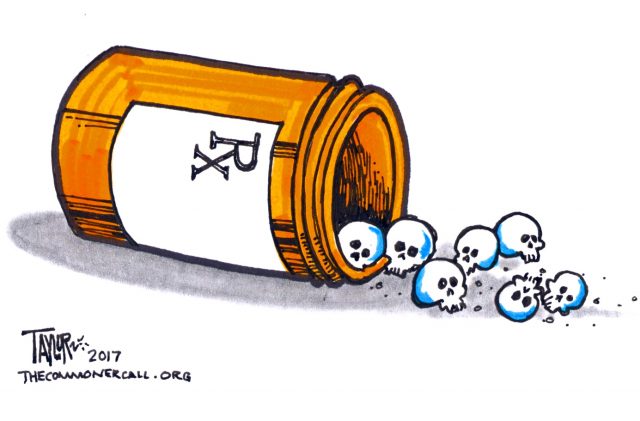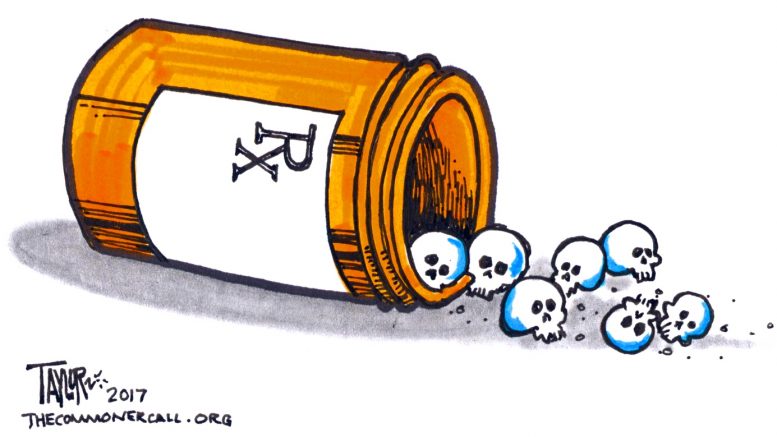
By Rob Stein
All Things Considered/NPR (3/6/18)
There’s more bad news about the nation’s devastating opioid epidemic.
In just one year, overdoses from opioids jumped by about 30 percent, according to a report released Tuesday by the Centers for Disease Control and Prevention.
The overall increase in opioid overdoses seen in hospital emergency rooms between the third quarter of 2016 and the third quarter of 2017 occurred across the nation. Some parts of the country experienced far greater increases, while a few have reported declines, the analysis shows.
“We have an emergency on our hands,” says acting CDC Director Anne Schuchat. “The fast-moving opioid overdose epidemic continues and is accelerating.”
The largest regional increase occurred in the Midwest, which saw a 69.7 percent jump in opioid overdoses, according to the report. The jump was driven in part by a 109 percent increase in Wisconsin. Overdoses increased 40.3 percent in the West, 21.3 percent in the Northeast, 20.2 percent in the Southwest and 14 percent in the Southeast.
“We saw, sadly, that in every region, in every age group of adults, in both men and women, overdoses from opioids are increasing,” Schuchat says.
The largest regional increase occurred in the Midwest, which saw a 69.7 percent jump in opioid overdoses, according to the report. The jump was driven in part by a 109 percent increase in Wisconsin.
The latest data could underestimate the overdoses, because many people who overdose never end up in the emergency room. “It might be even worse,” Schuchat says.
The report didn’t specify why overdoses vary across the country. But one factor is probably the differences in availability of newer, highly potent illegal opioids, such as fentanyl, which have been flooding the country in recent years, Schuchat says.
“We think that the number of people addicted to opioids is relatively stable. But the substances are more dangerous than five years ago,” Schuchat says. “The margin of error for taking one of these substances is small now and people may not know what they have.”
The supply of those more dangerous drugs is increasing faster in some parts of the country than in others, which may help explain the geographic variations, Schuchat says.
“Overall as a nation, we are still failing to adequately respond to the opioid addiction epidemic,” says Dr. Andrew Kolodny, co-director of opioid policy research at Brandeis University. “It is concerning that 20 years into this epidemic, it is still getting worse. The number of Americans experiencing opioid overdoses is still increasing.”
Although the Trump administration recently declared the epidemic to be an emergency, a significant increase in funding is urgently needed to treat Americans addicted to opioids. Kolodny says.
“It’s kind of like pointing to a burning building and saying, ‘Oh, there’s a fire there. There’s an emergency.’ And then not calling the fire department and watching it burn down,” Kolodny says. “There’s been a lot of talk from Congress and from the administration and a recognition that we need to do something about this problem. But nothing yet has happened.” …
Read the Rest and 3+-Minute Audio
(Commoner Call cartoon by Mark L. Taylor, 2017. Open source and free to use with link to www.thecommonercall.org )

